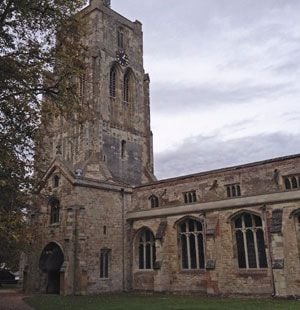Advent Day 6 - St Cecilia in Trastavere
Posted on
The church of Saint Cecilia is in Trastavere, a beautiful part of Rome that's filled with tiny alleyways and old buildings. The church is down one of those alleyways, our guidebook had to give us pretty precise instructions for us to find it, and we were glad that we went out of our way to track it down.
 Matthew Champion for last Christmas) then you'll probably have heard of the church at Ashwell. This small Hertfordshire village is full of unique historic property, with a high street showing houses from several eras. But this church itself is the real call for many, due to the extensive medieval graffiti you can find inside.
Matthew Champion for last Christmas) then you'll probably have heard of the church at Ashwell. This small Hertfordshire village is full of unique historic property, with a high street showing houses from several eras. But this church itself is the real call for many, due to the extensive medieval graffiti you can find inside.